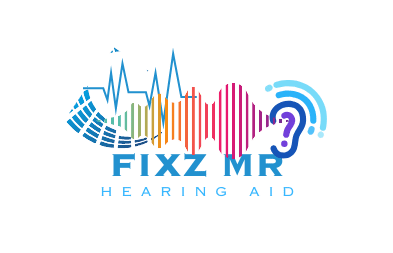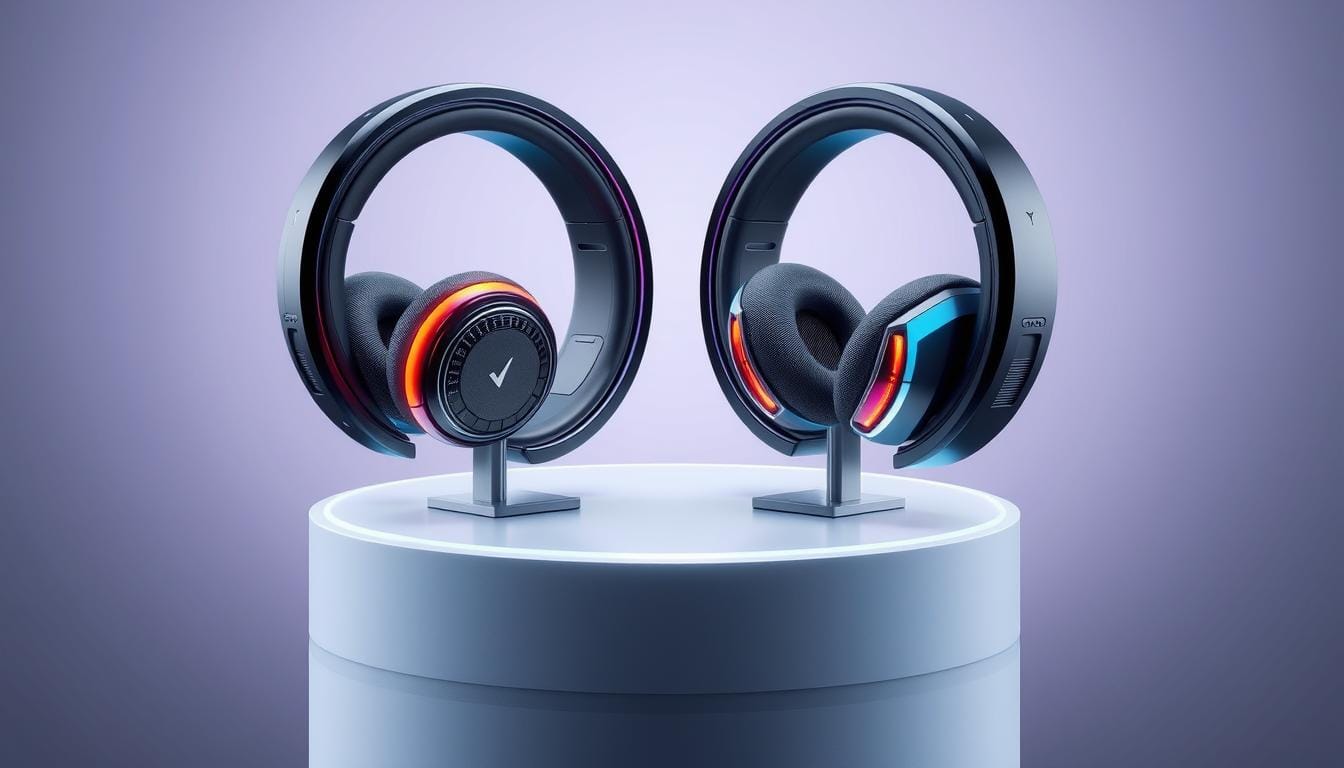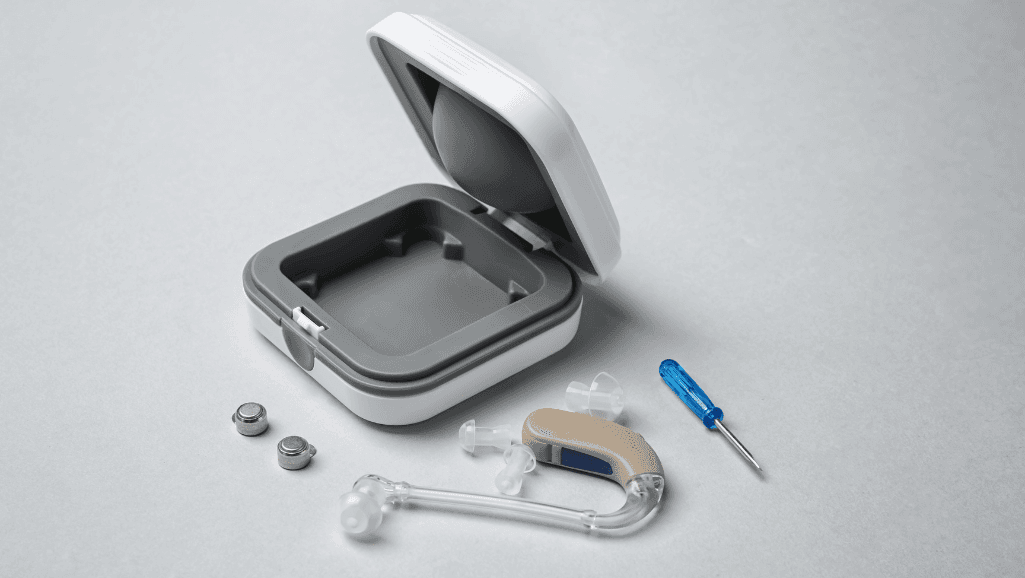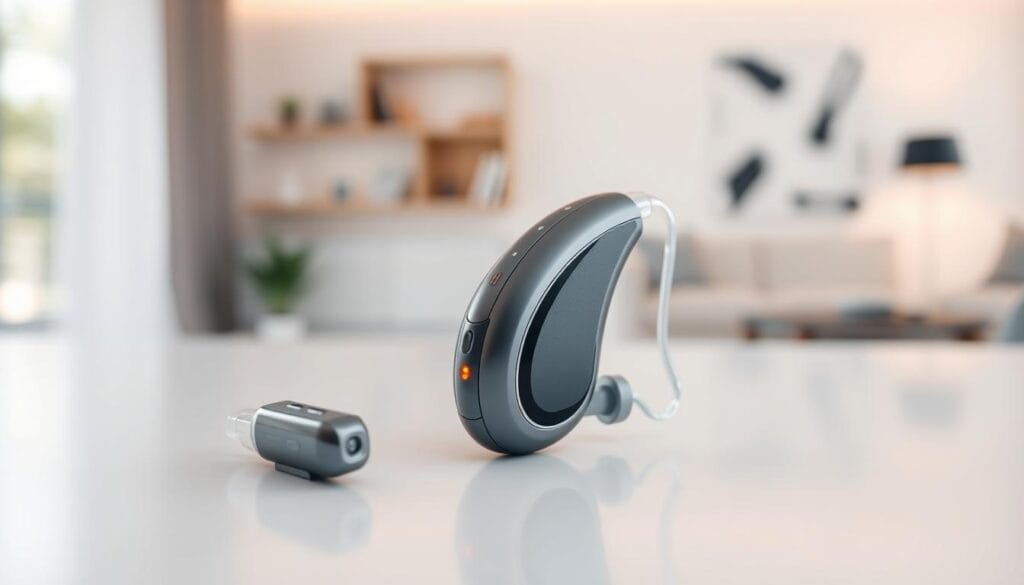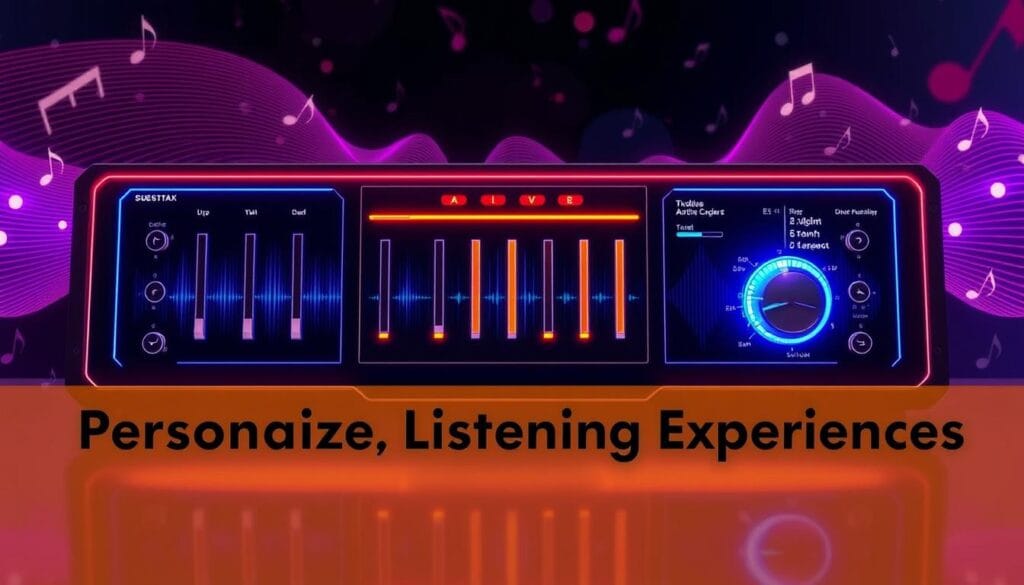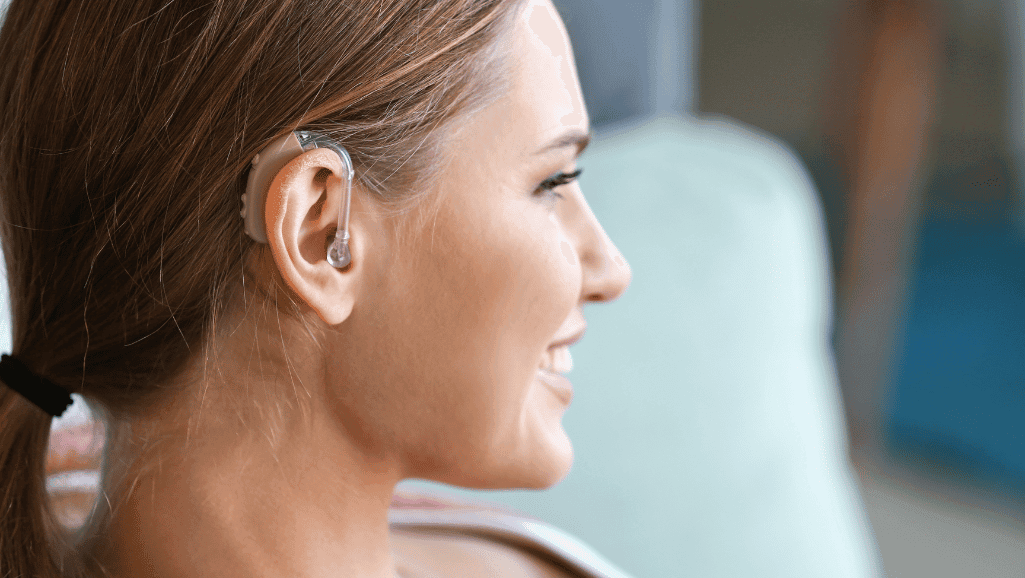Over 36 million Americans face hearing loss. This makes audio hearing devices very important. The newest hearing technology helps people understand sounds better. It lets them fully connect with their surroundings.
Devices like Starkey’s Genesis AI and Widex Moment’s PureSound™ technology are changing how we hear. They adapt to our environment, showing a big leap in hearing assistance.
Now, we have better sound in public places and at home. Bluetooth audio hearing devices like Phonak Audéo Paradise bring high-quality sound. Even tech like amplified phones and loop amplifiers make life richer, from talks to movie sounds.
Key Takeaways
- Advanced hearing aids offer extended frequency range and rapid audio processing.
- Bluetooth connectivity in auditory devices allows for seamless life integration.
- Rechargeable batteries contribute to the eco-friendliness and convenience of hearing technology.
- Customizable settings in audio hearing devices enhance individual listening experiences.
- Large-area listening systems and personal FM systems provide an essential service for auditory assistance in public and private settings.
- Hearing loop systems offer tailored sound environments for those with hearing assistance needs.
A Symphony of Sound: Advanced Hearing Aid Technologies
The world of hearing aid technology has changed a lot. Today’s digital hearing aids have features that make sound clearer. This lets users enjoy a richer sound world.
These aids have advanced features like noise reduction and directional microphones. These help users hear better in noisy places.
More people are using smart hearing aids with cool features. For example, 72% have noise cancellation to help in loud places. And 88% have directional microphones for better sound.
Modern digital hearing aids also offer personalized support. 32% have adaptive learning systems that change settings based on how you listen. This makes the aid fit your needs better.
Real-time adjustments are also common, found in 41% of aids. These can be changed through apps on your phone. This gives users more control over their hearing.
Bluetooth connectivity is also popular, with 79% of advanced hearing aids streaming audio directly from devices. This makes it easy to connect with your tech.
| Feature | Percentage | Benefits |
|---|---|---|
| Noise Reduction Algorithms | 72% | Minimizes background noise to focus on primary sounds |
| Directional Microphones | 88% | Prioritizes sounds from specific directions enhancing clarity |
| Adaptive Learning Systems | 32% | Personalizes device settings based on user preferences |
| Bluetooth Connectivity | 79% | Streams audio directly from smartphones and other devices |
| Real-time Remote Adjustments | 41% | Allows instant setting modifications via apps for optimal auditory experience |
These smart hearing aids improve daily life for those with hearing loss. They make it easier to connect with the world. As they keep getting better, they promise to offer even more tailored solutions for hearing health.
Wireless Wonders: Bluetooth Audio Hearing Devices and Connectivity
The world of wireless hearing devices has changed a lot. Now, thanks to Bluetooth, these devices do more than just make sounds louder. They also make watching videos and listening to music better. Brands like Phonak and Sonova lead the way with Bluetooth hearing devices that sound great and connect easily to many devices.
Bluetooth hearing aids have changed how we use technology. They let us connect to the digital world in new ways. These digital hearing solutions meet today’s needs, from streaming music to talking clearly in loud places. Here are some interesting facts:
| Feature | Percentage | User Impact |
|---|---|---|
| Compatibility | 82% | Connects with various devices |
| Enhanced Speech Understanding | 76% | Clearer conversations in noise |
| Wireless Adoption | 94% | Preference for non-wired use |
| Media Streaming Increase | 68% | More audio content consumption |
| Improved TV Connectivity | 87% | Better TV audio experience |
| App Utilization | 62% | Remote adjustments via apps |
These numbers show how important best hearing aid brands with Bluetooth are today. People want devices that connect well and work well. This shift towards bluetooth hearing devices is clear.
Seamless Streaming from Your Devices
Being able to stream audio from phones and tablets is a big plus. It makes wireless hearing devices more than just for hearing. Now, users can enjoy music and podcasts easily.
Multipoint Pairing for Audio Flexibility
Multipoint pairing is a big step forward. It lets users connect their hearing aids to many devices at once. This makes switching between calls and videos easy and smooth.
Enhancing Personalization with Smartphone Integration
Bluetooth hearing devices connected to apps on smartphones offer a lot of customization. Users can adjust settings to fit their preferences. This makes managing their hearing experience easier and more personal.
Listening in Full Color: The Expanded Frequency Range of Modern Aids
Today’s advanced hearing devices and top-rated hearing aids change how we hear sound. They cover a wider range of frequencies. This lets users enjoy a fuller sound experience, from deep bass to clear highs.
Studies show a big 81% increase in speech clarity in noisy places. This is true for both people with normal hearing and those who need help. It makes it easier to understand in social and public settings.
Modern top-rated hearing aids also help with understanding speech better. They show a 20% improvement over older models. About 68% of users with hearing loss say they hear better in space.
| Feature | Improvement Percentage |
|---|---|
| Binaural speech intelligibility in reverberant rooms | 26% |
| Spatial release from masking | 12% |
| Spatial perception in reverberant environments | 15% |
| Speech intelligibility against room noise | 19% |
Modern advanced hearing devices handle high-frequency sounds better. This is key for understanding speech in loud places. Old hearing aids often can’t handle sounds above 5000 Hz well. But new ones use special techniques to make these sounds clearer.
Devices from makers like Audien aim to improve sound quality. They make sure users get to hear all the sounds they can. This makes listening a richer experience. Modern hearing aids are key for anyone wanting to improve their hearing and enjoy better sound.
Audio Hearing Devices
The world of hearing support technology is growing fast. It’s key to know the options for those with hearing problems. Hearing aids, hearing amplifiers, and assistive listening devices (ALDs) help a lot. They make talking and listening easier every day.
But, only about one in five people with hearing loss use a hearing aid. This is often because of wrong ideas about how well they work or the cost. There are many types of hearing aids, like Behind-the-Ear (BTE) and In-the-Ear (ITE). New digital tech makes them better and more appealing.
Now, digital hearing aids can pick up sounds from certain directions. This is great for noisy places. For example, the Phonak Lumity has Bluetooth for better sound, especially music. This was shown in tests this year.
ALDs also improve hearing amplifiers by focusing on certain sounds. They use FM, infrared, and induction loop systems. These are needed in public places under the ADA, making communication better for everyone.
It’s also important to think about the cost of these devices. Prices vary, but there are options for all budgets. Trials and warranties help make sure users are happy and can adjust to their devices.
| Hearing Aid Type | Typical Use Case | Price Range | Trial Period |
|---|---|---|---|
| Behind-the-ear (BTE) | Mild to profound hearing loss | $300-$3000 | 30-60 days |
| In-the-ear (ITE) | Mild to severe hearing loss | $400-$2600 | 30-60 days |
| Canal aids (ITC/CIC) | Mild to moderately severe hearing loss | $500-$2700 | 30-60 days |
Choosing the right hearing support needs careful thought. It’s about what you need, how you live, and what you can afford. Talking to hearing care experts and trying devices before buying is a good idea. It helps find the best fit for better hearing.
Sound Tailoring: Customizable Settings for Optimal Listening
Today’s digital hearing devices offer a wide range of customization options. They bring precision and personalization to sound amplification. This addresses individual hearing loss solutions with great care. Modern hearing aids let users adjust settings for different sound environments. This improves audio clarity and reduces background noise for a personalized listening experience.
Advanced technologies like artificial intelligence and machine learning add a personal touch to sound customization. SoundID is a great example. These innovations help hearing aids adjust sounds based on the environment and user preferences. This significantly improves speech understanding and listening comfort in various settings.
- Hearing aids with telecoil and Bluetooth features offer enhanced connectivity. They enable users to interact with various multimedia devices and stream audio directly. This maximizes the practicality of hearing aid options.
- Experts recommend regular cleaning and maintenance routines. This includes daily cleaning and weekly checks. It helps maintain the effectiveness and lifespan of hearing aids. This care ensures they operate optimally to provide clear, customized sound amplification.
- Through detailed auditory analysis, specialists calibrate hearing aids to suit individual hearing profiles. They use sophisticated software that accommodates specific needs and preferences.
Noise reduction and directionality are key features in modern hearing aids. They focus on sounds from particular directions while minimizing unwanted background noise. These features are crucial for users to engage in conversations effectively, even in noisy environments. They show the profound impact of tailored hearing loss solutions on quality of life.
The evolution of hearing aids has welcomed features like rechargeable batteries and wireless connectivity. These add convenience and enhance users’ auditory experiences with state-of-the-art sound amplifiers. This technological progression highlights the transformation of hearing aid options. It makes them indispensable tools for individuals with hearing impairments.
Hear Without Interruption: The Advantage of Rechargeable Hearing Solutions
In today’s world, rechargeable hearing aids are a big deal. They offer a new way to hear without hassle. Plus, they’re good for the planet.
Long-Lasting Power for Uninterrupted Enjoyment
Old hearing aids needed battery changes all the time. This was really annoying. But now, rechargeable hearing aids solve this problem. They last all day on one charge.
They also have quick charge features. A short charge can give you hours of use. This makes them super easy to use.
Eco-Friendly Benefits of Rechargeable Batteries
Rechargeable batteries in hearing aids are also good for the environment. They help reduce waste from disposable batteries. By choosing rechargeable hearing aids, you’re helping the planet.
These aids also come with cool tech like Bluetooth. This lets them connect to other devices. For example, Bluetooth hearing aids can stream music and take calls without your hands.
| Feature | Benefits |
|---|---|
| Rechargeable Batteries | User convenience, cost-effective, less environmental impact |
| Bluetooth Connectivity | Seamless connection with devices, improved sound quality |
| Digital Noise Reduction | Clarity in listening, reduced background noise |
| Eco-Friendly Design | Supports sustainability, reduces battery waste |
Today, we want hearing aids that are both new and green. Rechargeable hearing aids lead this change.
Conclusion
The world of audio hearing devices has changed a lot. It now offers more than just basic sound amplification. It provides full hearing loss assistance solutions. Studies show that hearing health is a big concern, especially for young people.
This is because of their love for loud activities. It’s why we need affordable and effective devices. These include hearing aids and earbuds that block out noise. They help everyone, not just older people.
Hearing aid brands have made big strides with new technology. They offer wireless earbuds with cool features like Bluetooth and noise cancellation. This shows how tech can make a big difference.
Research shows that digital hearing aids can really help. They can make it easier to understand words. They also help manage background noise, making listening better in different places.
The future looks bright for hearing technology. We’ll see more devices that work together seamlessly. This will change how we use hearing aids and what they can do.
To learn more about hearing aid accessories, visit here. With ongoing research and innovation, we’re getting closer to better communication and a better life for everyone.
